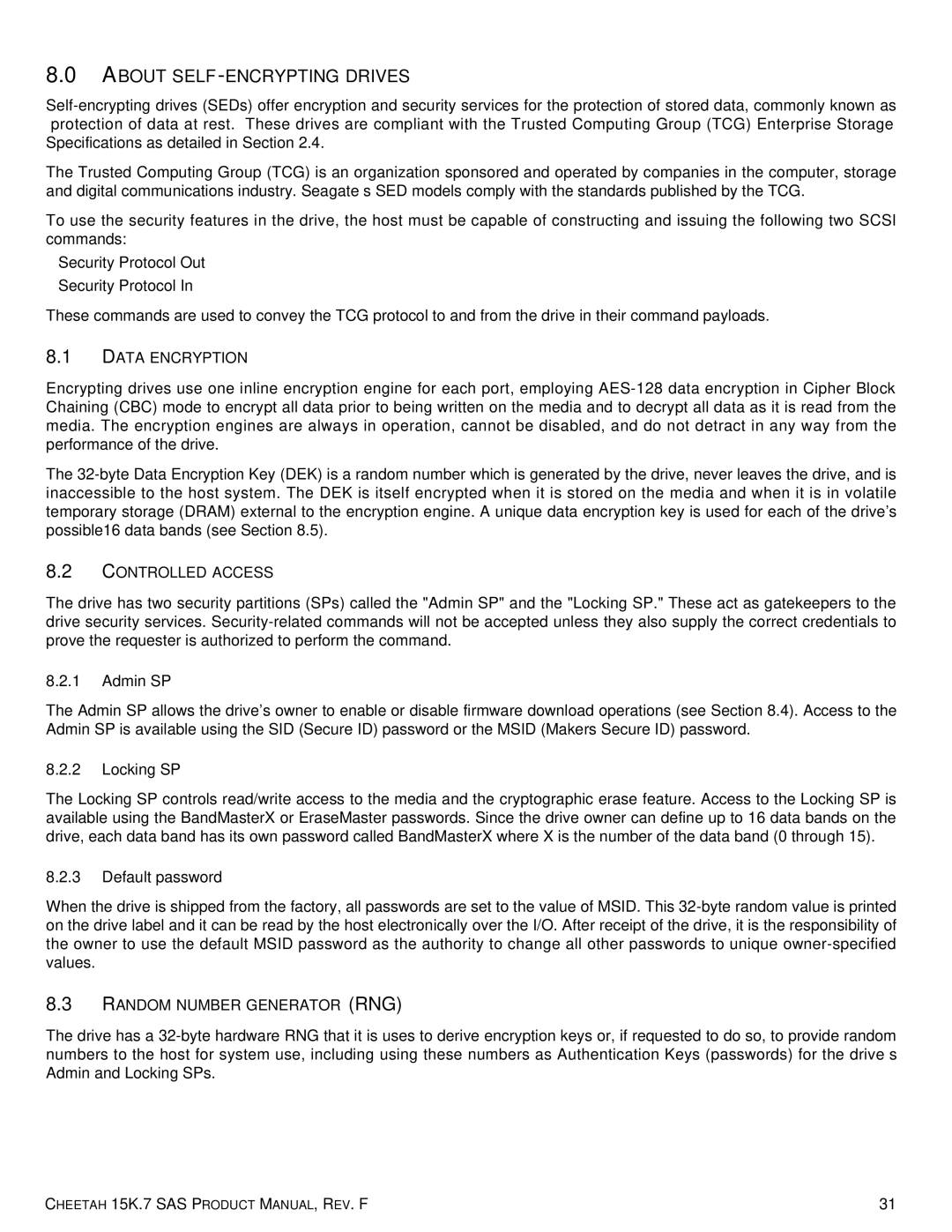8.0ABOUT SELF-ENCRYPTING DRIVES
The Trusted Computing Group (TCG) is an organization sponsored and operated by companies in the computer, storage and digital communications industry. Seagate’s SED models comply with the standards published by the TCG.
To use the security features in the drive, the host must be capable of constructing and issuing the following two SCSI commands:
•Security Protocol Out
•Security Protocol In
These commands are used to convey the TCG protocol to and from the drive in their command payloads.
8.1DATA ENCRYPTION
Encrypting drives use one inline encryption engine for each port, employing
The
8.2CONTROLLED ACCESS
The drive has two security partitions (SPs) called the "Admin SP" and the "Locking SP." These act as gatekeepers to the drive security services.
8.2.1Admin SP
The Admin SP allows the drive's owner to enable or disable firmware download operations (see Section 8.4). Access to the Admin SP is available using the SID (Secure ID) password or the MSID (Makers Secure ID) password.
8.2.2Locking SP
The Locking SP controls read/write access to the media and the cryptographic erase feature. Access to the Locking SP is available using the BandMasterX or EraseMaster passwords. Since the drive owner can define up to 16 data bands on the drive, each data band has its own password called BandMasterX where X is the number of the data band (0 through 15).
8.2.3Default password
When the drive is shipped from the factory, all passwords are set to the value of MSID. This
8.3RANDOM NUMBER GENERATOR (RNG)
The drive has a
CHEETAH 15K.7 SAS PRODUCT MANUAL, REV. F | 31 |
